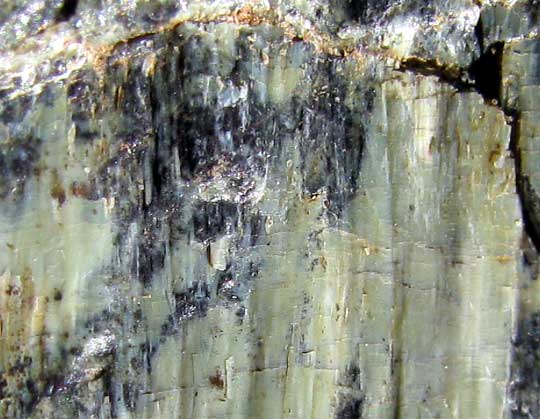Excerpts from Jim Conrad's
Naturalist Newsletter

from the April 13, 2009 Newsletter, issued from Siskiyou National Forest west of Grants Pass, Oregon:
SERPENTINE & SERPENTINE BARRENS
One reason the flora of southwestern Oregon is so interesting and supports so many endemic plants is that much of the bedrock is serpentine. You can see a typical roadside serpentine rock in my hand above.
Serpentine often has a greenish color and a somewhat glassy, greasy or silky luster. I read that the name serpentine is based on the Latin serpentinus, meaning serpent rock. One serpent-like feature of serpentine is that it can be scaly, as shown below:

Serpentine is actually a name given to about 20 rock varieties. Basically the serpentines are silicates like quartz mixed with fair amounts of magnesium, iron and water, and they often contain minor amounts of other elements, especially chromium, manganese, cobalt and nickel. The serpentines are metamorphic rocks -- heavy aggregates created when landmasses from the Pacific Ocean rose up, slammed into and added territory to North America's western coast, in the process smashing together rocks, melting them and reconstituting their minerals into what's in my hand.
That part about certain serpentine varieties containing varying amounts of minor elements is important because soils developed atop serpentine can be toxic or growth-inhibiting to many plants when nickel, chromium, and/or cobalt have concentrated in them. Vegetation developing on serpentine soils often supports many specialized, often endemic and slow- growing species. Around here sometimes you see whole mountain slopes with serpentine soil showing up as open barrens with scattered small trees, especially conifers, surrounded by regularly forested slopes. These open areas with serpentine bedrock are called "serpentine barrens."